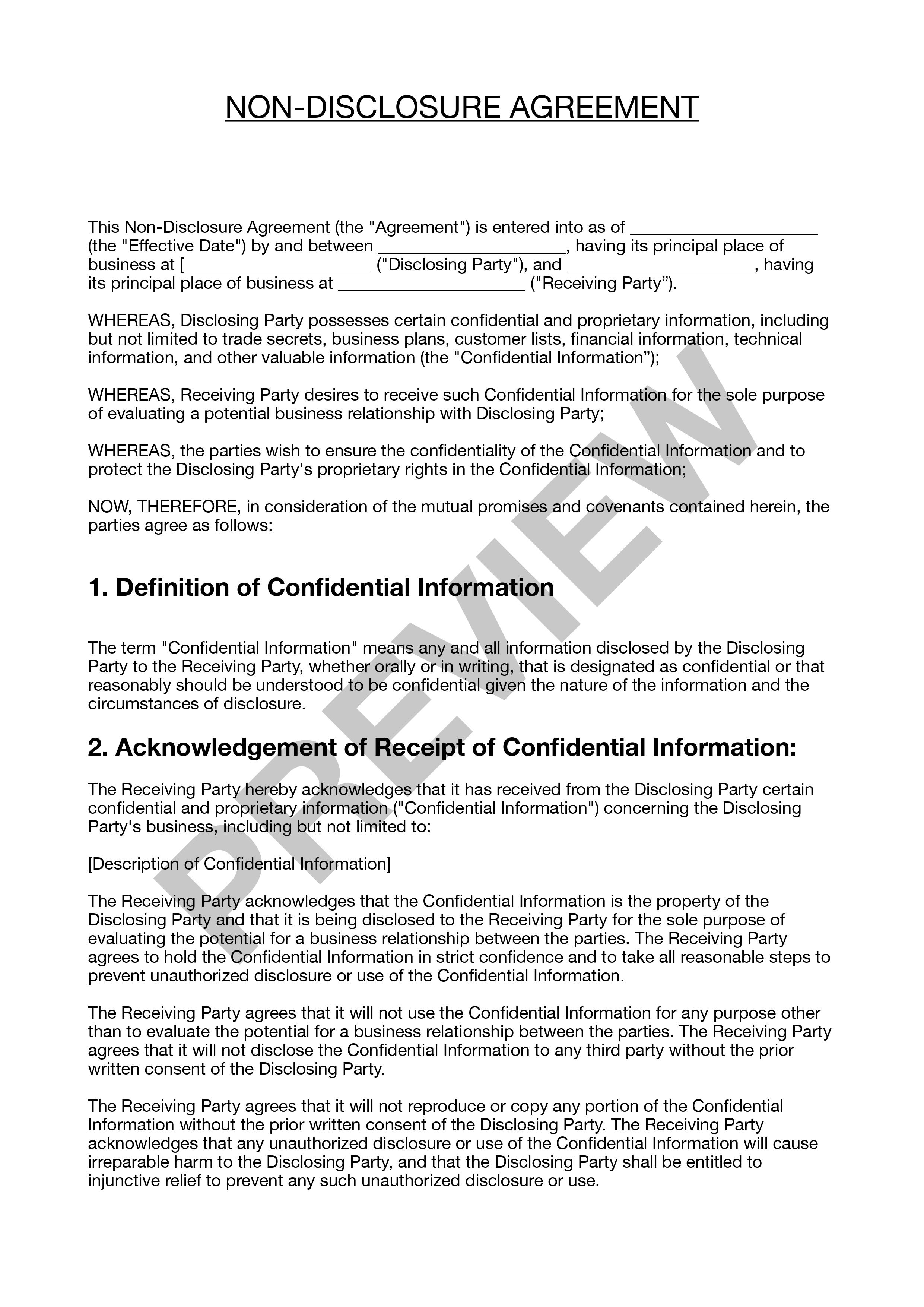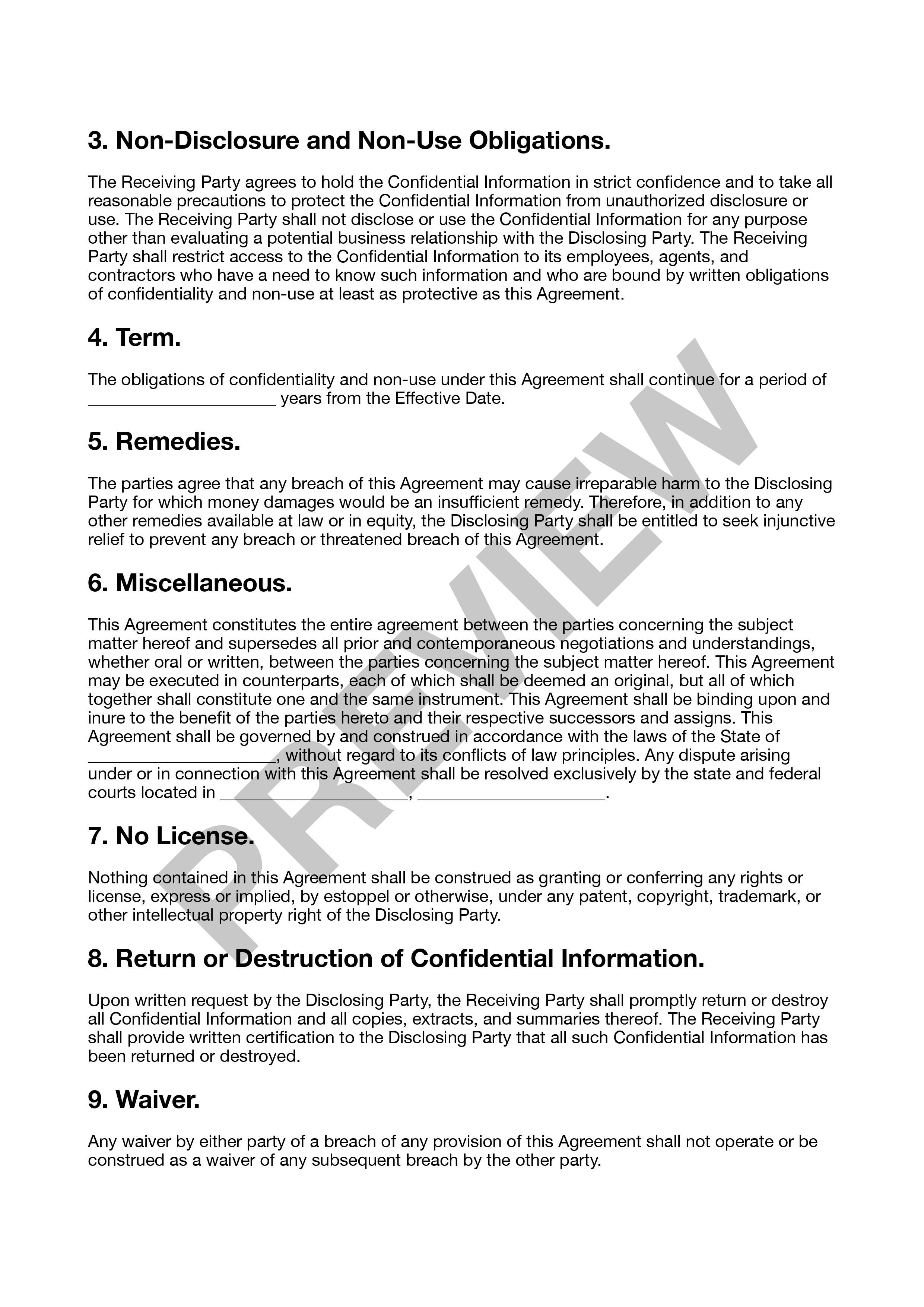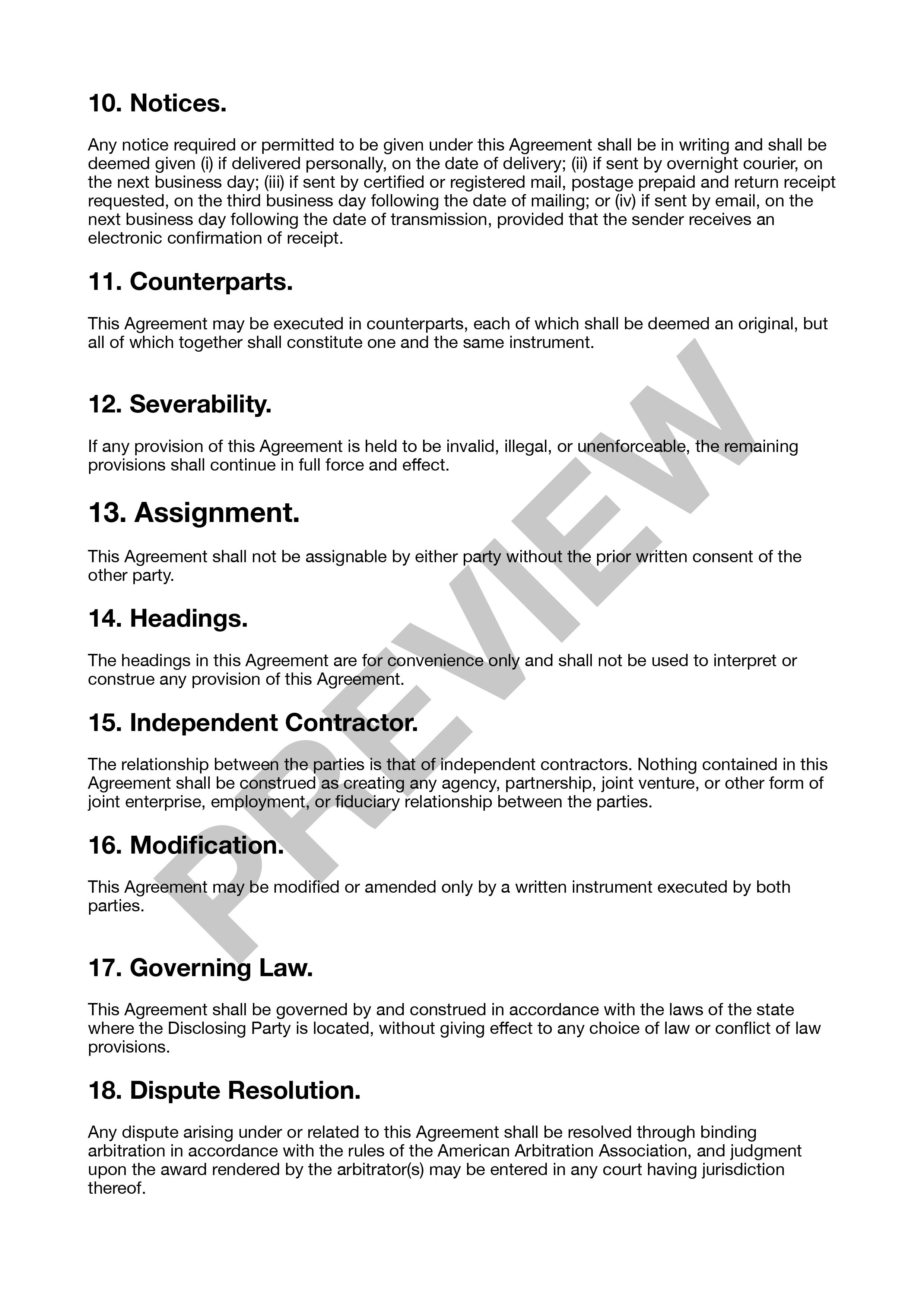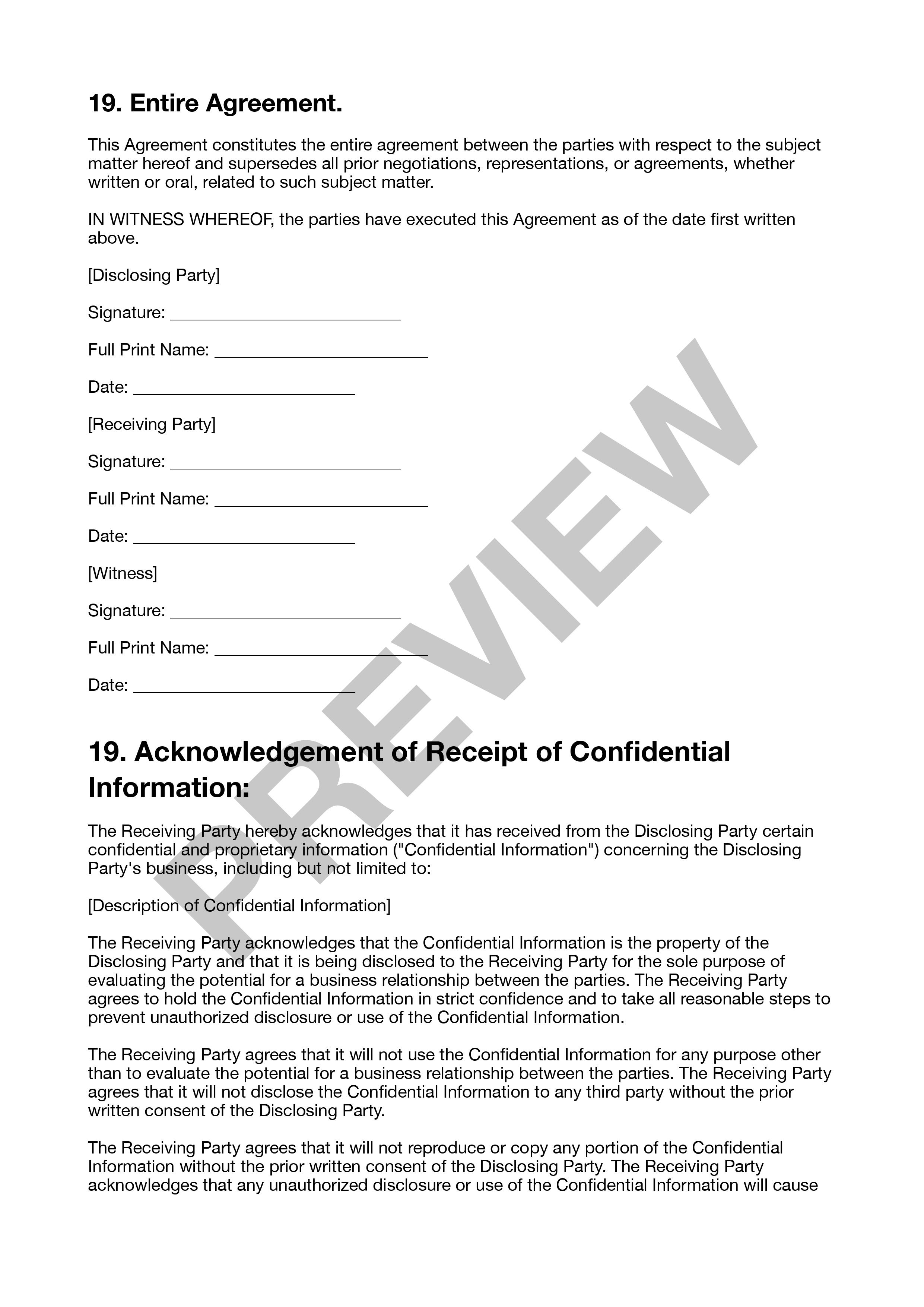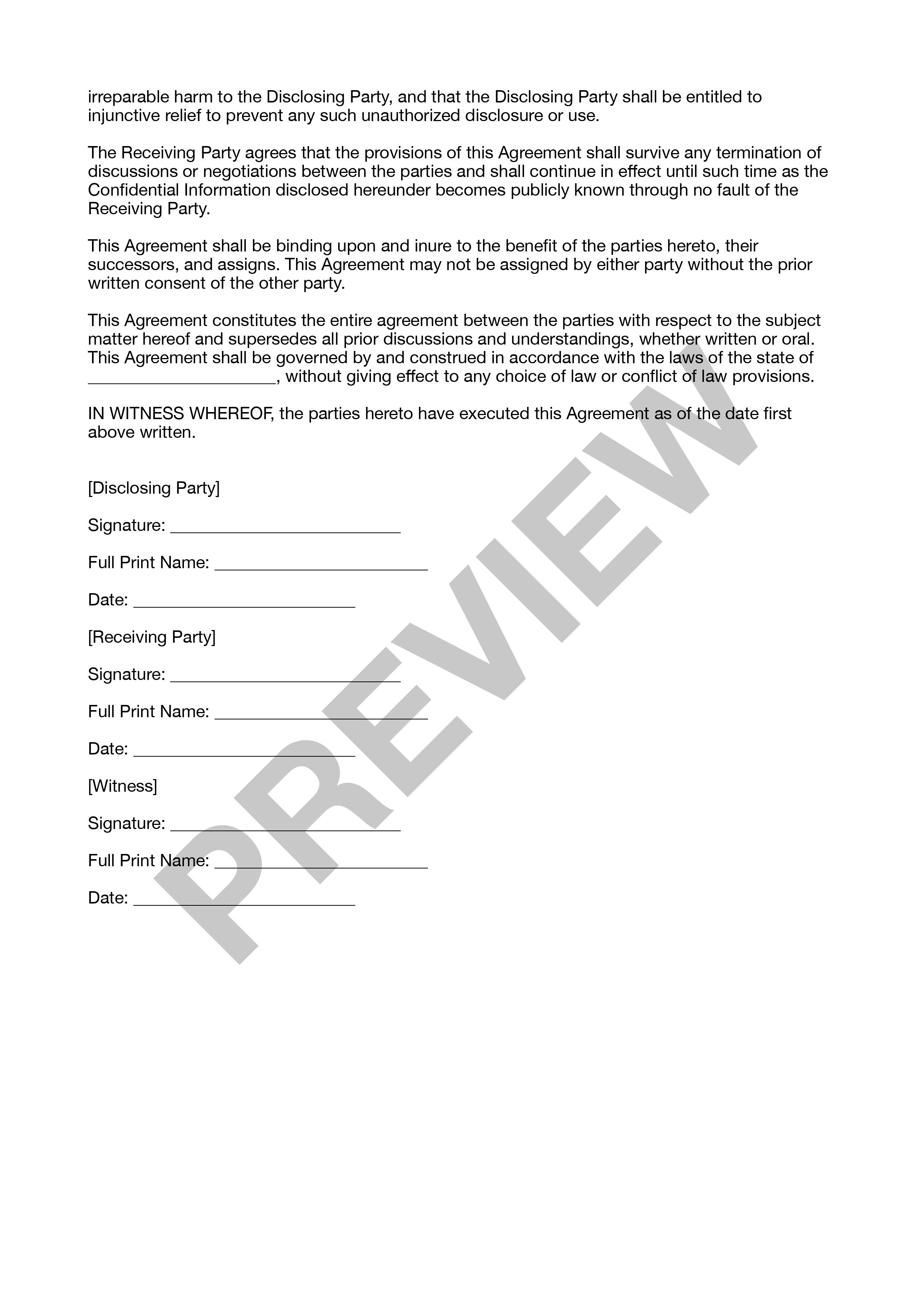Non-Disclosure Agreement
Get Started
Confidentiality
Additional Clause
Termination
Final Details
Frequently Asked Questions
The state that you should choose on a non-disclosure agreement (NDA) depends on several factors, such as where the disclosing party and the receiving party are located, where the confidential information will be used or disclosed, and the governing law that you wish to apply to the agreement.
In general, if both parties are located in the same state, it may make sense to choose that state as the governing law for the agreement. This can help ensure that the agreement is enforceable under that state's laws and that any disputes are resolved in that state's courts.
However, if the parties are located in different states, you may wish to choose the disclosing party state as the governing law.
A Non-Disclosure Agreement (NDA) is a legal contract between two or more parties that prohibits the disclosure of confidential or proprietary information shared between them. NDAs are often used to protect sensitive business information, trade secrets, or other valuable intellectual property.
You should add an additional clause to a non-disclosure agreement (NDA) when you need to address a specific issue or concern that is not covered by the standard clauses of the agreement. Here are some situations where an additional clause may be necessary:
- Non-solicitation: If you want to prevent the receiving party from soliciting the disclosing party's customers or employees, you can include a non-solicitation clause in the NDA.
- Term extension: If you want to extend the term of the NDA beyond the standard period, you can include a clause that specifies the extended term.
- Governing law and jurisdiction: If you want to specify the governing law and jurisdiction for the NDA, you can include a clause that outlines these details.
- Export control: If the confidential information is subject to export control laws or regulations, you can include a clause that requires the receiving party to comply with these laws and regulations.
- Return of information: If you want to ensure that the receiving party returns or destroys all confidential information at the end of the NDA term, you can include a clause that requires the receiving party to do so.
- Exceptions to confidentiality: If there are specific exceptions to the confidentiality obligations, such as information that is already publicly available or information that is required to be disclosed by law, you can include a clause that outlines these exceptions.
The disclosing party in a non-disclosure agreement (NDA) is the individual or entity that is sharing confidential information with another party, known as the receiving party.
The disclosing party is usually the party that has ownership of the confidential information or has been authorized to disclose it by the owner. The disclosing party is responsible for identifying the information that is confidential and for ensuring that the receiving party understands the nature and importance of the confidential information.
The disclosing party may be an individual, such as an inventor or a business owner, or a company or organization, such as a corporation or a non-profit. In some cases, the disclosing party may be a government agency or a research institution.
If the disclosing party in a non-disclosure agreement (NDA) is a corporation, the NDA should identify the specific entity within the corporation that is disclosing the confidential information. This is important because different entities within a corporation may have different interests and obligations with respect to the confidential information.
The receiving party in a non-disclosure agreement (NDA) is the individual or entity that is receiving confidential information from the disclosing party.
The receiving party may be an individual, such as an employee or a consultant, or a company or organization, such as a business partner or a vendor. The receiving party is obligated under the NDA to keep the confidential information secret and to use it only for the purposes specified in the agreement.
The receiving party may have access to the confidential information for a variety of reasons, such as to evaluate a business opportunity, to provide services to the disclosing party, or to engage in research and development activities. The receiving party may also be required to disclose the confidential information to its employees or agents, but only to the extent necessary to achieve the purposes specified in the NDA.
If the receiving party in a non-disclosure agreement (NDA) is a corporation, the NDA should identify the specific entity within the corporation that is receiving the confidential information. This is important because different entities within a corporation may have different obligations and responsibilities with respect to the confidential information.
The termination clause of a non-disclosure agreement (NDA) specifies when the agreement will end or expire. The termination date can be a specific date or an event that triggers the termination of the NDA.
The termination date of an NDA should be carefully considered and tailored to the specific needs of the parties. Generally, NDAs can have a fixed term, such as a specific number of months or years, or they can be indefinite.
Including a witness on a non-disclosure agreement (NDA) is not always necessary, but it can be helpful in ensuring the enforceability of the agreement.
Even if a witness is not required by law, including one can provide additional evidence of the parties' intent and help to prevent disputes over whether the NDA was signed voluntarily and with an understanding of its terms.


